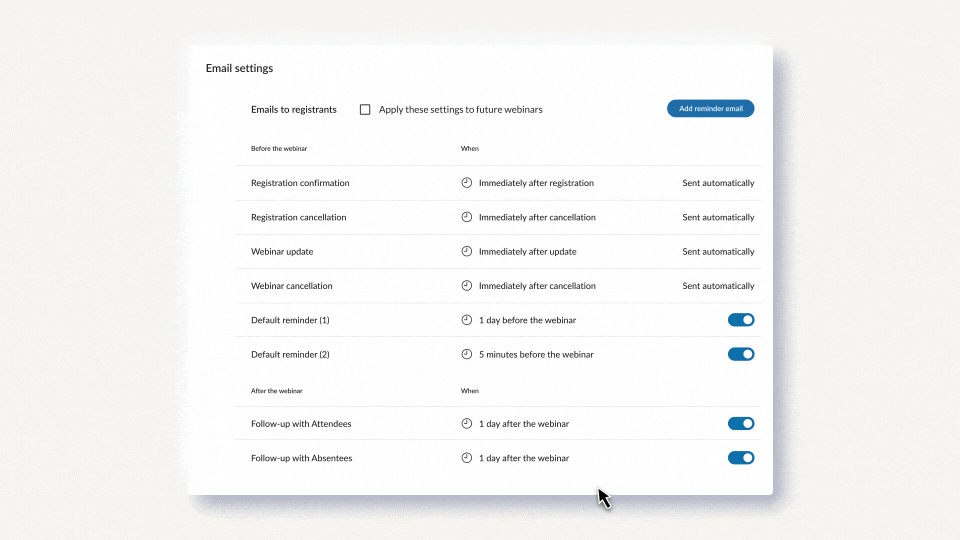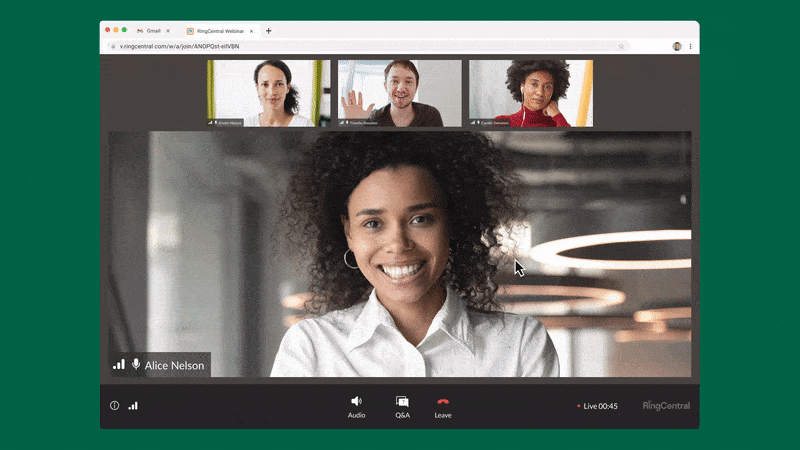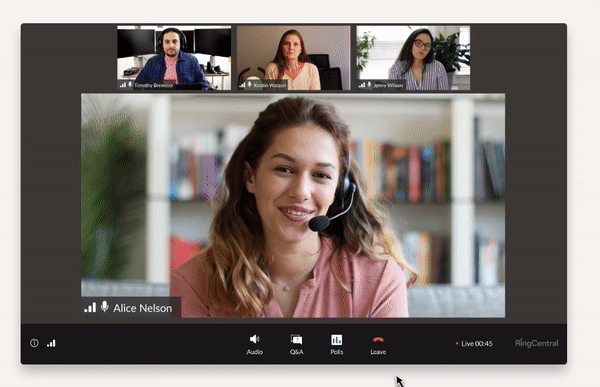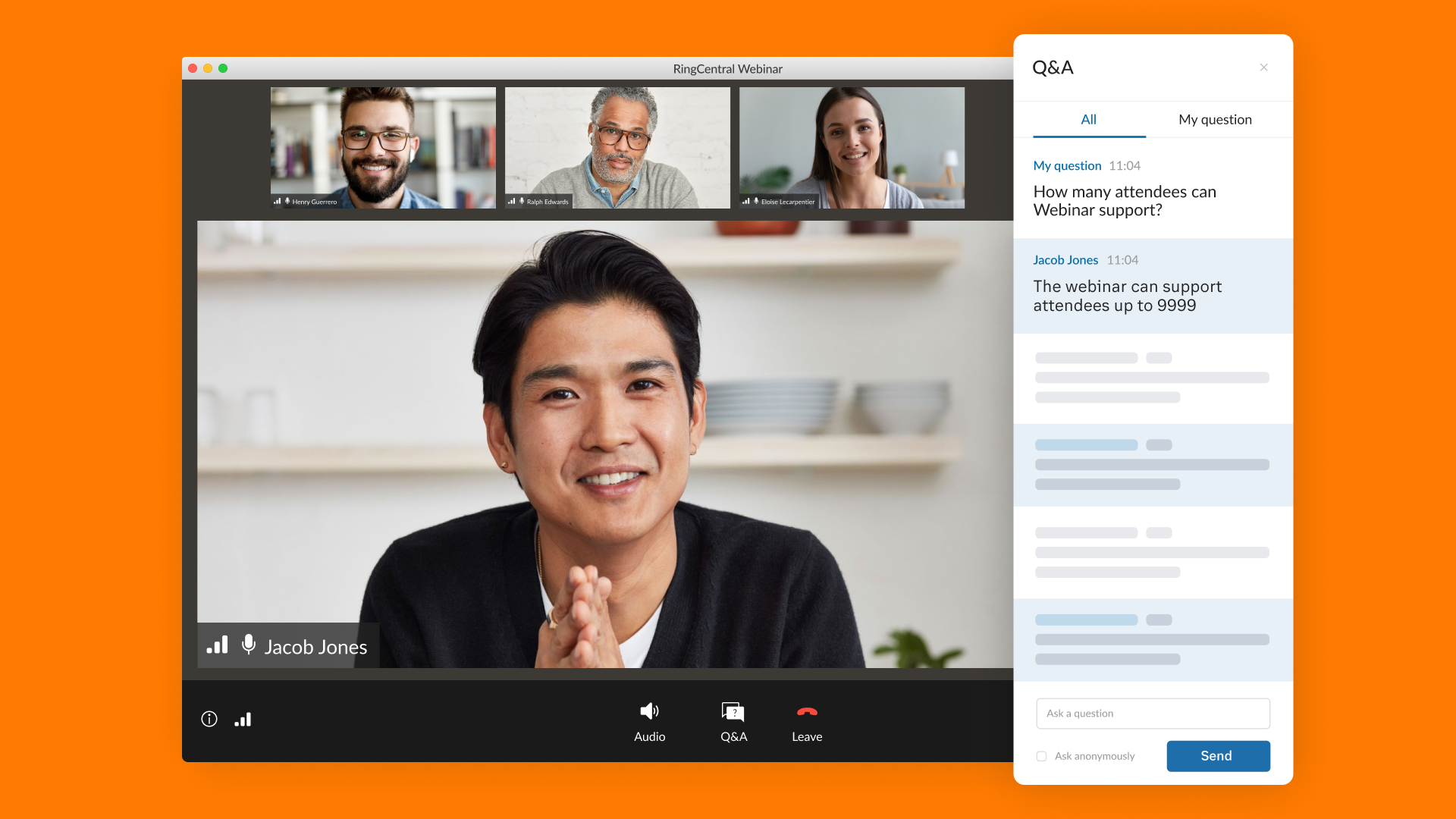Webinars are on the rise as remote and hybrid work continue to flourish, and following webinar best practices has become a necessity. As people get more familiar with these virtual presentations, their expectations for performance and creativity increase.
Audience expectations put more pressure on hosts to develop impactful presentations and formats on topics of interest. There is a lot of work that goes into creating a successful webinar. Here we have broken down some best practices to ensure your webinar is a success.
Today, we’ll share these webinar best practices:
- Select the right webinar platform
- Promote your webinar
- Schedule your webinar properly
- Include a Q&A session
- Practice your webinar beforehand
- Engage with webinar participants
1. Select the right webinar platform

A lot of webinar best practices can be handled by one choice: the platform you use to run your webinar!
There are a lot of options on the market today when it comes to webinar technology, so take the time to explore what’s available.
What to look for in a webinar platform
Overall, it’s good to look for a webinar platform that offers:
- Ease of use for webinar creators
- A simple interface that allows participants of all tech levels to join and participate
- Engagement tools like comments, Q&A, polls, and more
- Calendar synching for easy scheduling
- Follow-up tools to keep the conversation going
- …and a price tag that’s within your budget!
Fun fact: RingCentral Webinar is 50% cheaper than the leading webinar competitor… and it offers all the above and more! Check out RingCentral Webinar here or watch this short video:
2. Promote your webinar

All the time and effort that goes into preparing a webinar is wasted if you don’t get the audience you want. Start promoting your webinar about a month before it is set to take place. You can use this webinar template to send out information about your webinar.
Channels to promote your webinar
There are a number of channels through which to promote webinars, including:
- Your website or blog. Have a regular place where you identify scheduled events so people know where to look. A blog post can highlight the upcoming topic and its importance.
- Email contact lists. Send messages to existing contacts and invite people to join your contact list for updates and reminders. Text messaging lists are an option as well.
- Social media. Announce your events and send daily reminders via your owned channels. If you use panelists for webinars, they can share your posts on their channels to extend the reach.
- Virtual communities. Depending on your organization, it is likely there are virtual communities related to what you do. People in these communities are naturally interested if your events are relevant.
- Digital banner/search ads. If your contact lists are limited or you want to expand your reach, digital ads allow you to target particular demographics.
3. Schedule your webinar properly
Webinar statistics show that Wednesday and Thursday are the best days to host a webinar. However, the ideal days and times for your audience may vary.
What to consider when scheduling a webinar
As you look for ideal times to schedule, considering the following:
- When your audience is available. Conduct surveys to find out what days/times are more desirable for your audience when possible.
- When panelists/presenters are available. You also need times that work for the ideal presenters and panelists on a given topic.
- What your engagement data reveals. Top web conferencing solutions like RingCentral have powerful post-webinar engagement insights you can use to evaluate results for different days/times.
It also helps to make it easy for panelists and guests to add the webinar to their personal calendars. A tool like RingCentral Webinar syncs with popular calendars and guests can choose to send an invite to themselves for safe keeping.
4. Include a Q&A session in your webinar

A Q&A session at the end of your webinar is important for engagement, especially for B2B. Let the audience know early that there will be a time for questions at the end so they can think ahead and you can keep the webinar on track.
Q&A sessions allow audience members to draw out relevant information that wasn’t included or to clarify certain items. To get the ball rolling, plan ahead with some frequently asked questions that might inspire people to jump in or ask follow-up questions.
5. Practice your webinar ahead of time
Webinars have more moving parts than a conventional in-person presentation or seminar. Therefore, it is important to practice your presentation or format, including any technology transitions.
Set up your webinar recording and time how long your webinar takes to complete. This helps you feel ready for the actual day. It also allows you to add or remove topics or activities to fit the scheduled time.
Be sure to think up potential questions your attendees might have, too, so you’re ready to answer them in real time!
6. Engage with your audience

Audience engagement is important to webinar success. Members are more interested and attentive when they are “on the ready” to participate.
Q&A sessions aren’t the only effective way to interact with the audience. Other options include polls, breakout rooms, and chat-directed questions. All of these features are available through RingCentral. Track insight data to hone the most successful methods for your audience.
Tips to make your webinar more interactive and engaging
A successful webinar requires active engagement from your participants. There are many ways to keep your audience engaged, no matter the type of webinar. Here are some of our favorites.
- Use visuals. Virtual presentations can come through as very monotonous without the support of visuals (charts, graphs, pictures). Effective visuals help retain participant interest.
- Conduct ice breakers. Web conferencing faces more barriers to personalization than in-person seminars. Ice breakers make participants comfortable and help them acclimate to the digital environment.
- Allow for chats. Chats allow people to present questions spontaneously and engage with the group on topics of interest. They are often a way for collective expansion of key points of discussion.
- Create breakout rooms. It is hard for audience members to interact in a large group setting. Breakouts allow for more interaction for all participants.
- Have live polls. Invite feedback at key points in the webinar and increase audience attentiveness with periodic polls.
- Allow for Q&A. Q&A sessions are one of the most effective ways to promote engagement. They also demonstrate to your audience that you have genuine interest in their perspective.
Webinar best practices: You’re on your way to better presentations!
As long as you follow best practices for webinars, you should reap the benefits that hosting a webinar can produce.
And if you’re looking for an easy-to-use, affordable solution for running webinars, don’t miss RingCentral Webinar!
Originally published Jul 25, 2023, updated Jul 26, 2023
Looking For Startup Consultants ?
Call Pursho @ 0731-6725516
Telegram Group One Must Follow :
For Startups: https://t.me/daily_business_reads







